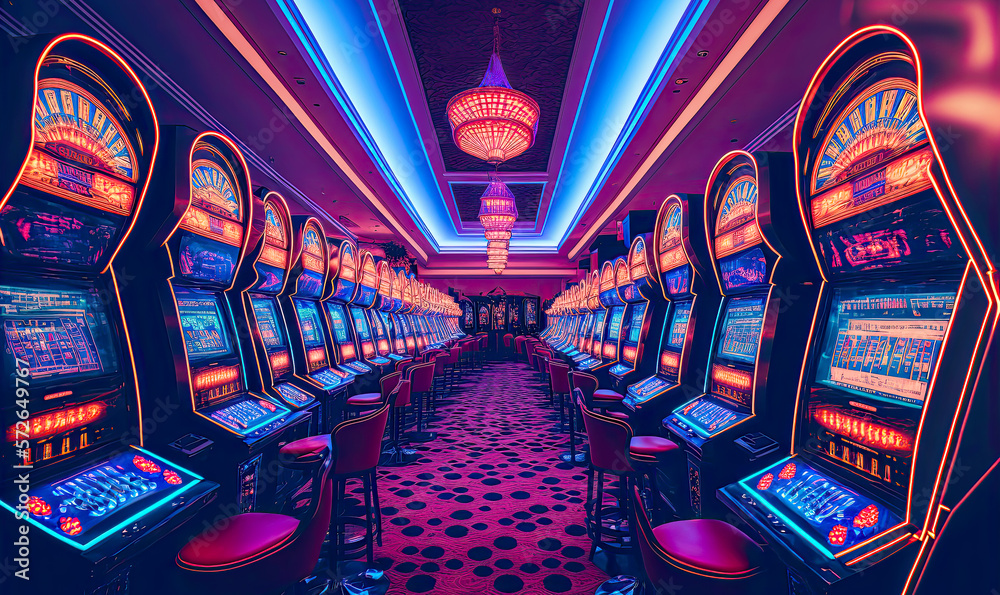
Casino experiences have long captivated the human imagination, drawing gamblers into a realm filled with luck, tactics, and the allure of adventure. Each game is painstakingly crafted not just for fun, but also to evoke particular emotional responses that keep participants immersed and invested. Understanding the drives behind these designs reveals much about how human psychology plays a vital role in the gaming experience.
From the bright lights and lively sounds to the sophisticated layering of rules and payoffs, casino games are designed to create an atmosphere of anticipation and eagerness. Game designers leverage mental cues to influence player behavior, whether through the use of big prizes, near-miss scenarios, or social connections. By examining these factors, we can better appreciate how casino games fulfill not just a desire for entertainment, but more profound psychological needs for thrill and risk.
Grasping Player Actions
Casino games are crafted with a thorough understanding of player psychology, which is vital for luring and retaining players. The excitement of the game, combined with the expectation of winning, creates a formidable attraction. Game designers employ elements like sound effects, dynamic graphics, and captivating gameplay to capture attention and elicit emotional responses. These sensory experiences enhance the total environment, making players feel more attached in the game.
Another important aspect of player behavior is the notion of risk and reward. Casino games often weigh high-risk scenarios with the potential for significant rewards, which can cause the event known as near-miss phenomenon. When players come close to winning, the brain produces dopamine, bolstering their behavior and motivating them to continue playing in quest of that elusive win. This cycle of anticipation and disappointment plays a crucial role in how games are designed and promoted.
Lastly, social elements also play a central role in player behavior at casinos. Many games are made to be played in groups or with other players, nurturing a sense of community and shared experience. The community engagement inherent in games like baccarat enhances enjoyment and can lead to prolonged gaming periods. Designers capitalize on this by creating environments that invite players to remain, connect, and return, making the overall casino experience more inviting.
The Role of Imagery and Audio
Visuals and audio play a vital role in elevating the gambler’s experience within gambling games. Designers utilize vibrant colors, striking graphics, and captivating animations to grab gambler’s attention and maintain their interest. The use of motifs, such as exploration or opulence, helps create an immersive atmosphere that transports players into a different world. By appealing to the senses, these elements add to a intensified emotional response, prompting players to interact more deeply with the games.
Sound design is equally important in reinforcing the overall experience of casino games. The mix of ambient music, audio effects for winning combinations, and ambient noises creates an sound landscape that holds players enthralled. Sounds associated with victories, such as chiming bells or celebratory music, evoke feelings of excitement and reward, encouraging players to continue playing. These sound cues are carefully placed to amplify the thrill of the game and create a more engaging experience.
Additionally, the synchronization of imagery and sound is crucial for reinforcing the game’s overall theme and mood. Each element should coordinate seamlessly to create a cohesive experience that pulls players in. The effective use of this synergy not only improves user enjoyment but also boosts the chances of return play, as players become more engaged in the captivating world that the casino games offer. This thoughtful combination of imagery and sound ultimately enhances player engagement and loyalty.
Incentive Systems and Participation
The development of casino experiences greatly relies on incentive systems to ensure players engaged and returning for more. These systems are rooted in behavioral theories that take advantage of human nature and motivation. Players are often driven by the thrill of winning, which is supported by immediate responses through the game structure’s mechanics. casino non AAMS This instant gratification not just enhances the overall experience but also fosters a sense of success, encouraging players to continue playing in hopes of greater gains.
Gaming establishments implement various incentive systems, including jackpots, bonuses, and increased rewards, to captivate participants. These features create a layer of thrill that maintains engagement. Additionally, the randomness of results plays a significant role in sustaining attention. The variable reward system, where successes are random but happen often enough, maintains players on edge and driven to keep playing. This cycle of hope and anticipation is essential to the effectiveness of casino games.
In addition, social elements, such as competitive events and collaborative options, enhance the engagement factor by leveraging the competitive nature of players. The shared experience of gaming with others can amplify the excitement of winning and create a sense of community within the casino. By combining these community elements with efficient reward systems, casino games don’t just offer fun but also nurture a stronger connection among players, reinforcing their loyalty to the gaming experience.